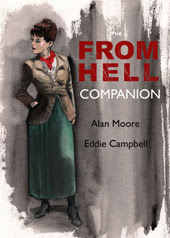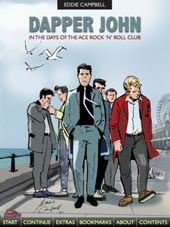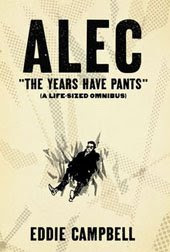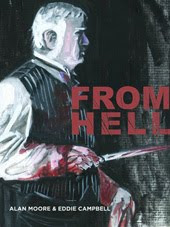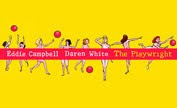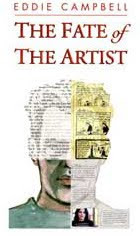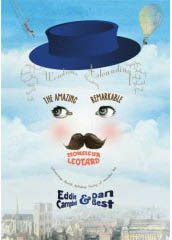 I
I was looking forward to this new book a/ because it's Alex Toth and b/ because it reprints 60 stories, Toth's entire contribution to the catalogue of a long defunct publisher whose material we rarely see reprinted. And c/ because I was guessing at least half of these stories would be in the ROMANCE genre. The rest are HORROR, CRIME and WAR, but how rare it is to get a big set of Romance things in one package. (
video preview)
The Wikipedia entry for
Standard Comics just talks about the publisher's superhero characters of the early 1940s, none of whom are of any interest to me. The company got into the Romance line on the bandwagon (more on that in a future post) in 1949, and Toth arrived there in 1952. I saw a couple of these stories reprinted by Eclipse Comics about twenty years ago and I thought they were lovely. They suggested ways in which comics could be made closer to real experience. Toth himself favoured the genre.
"Romance was very special. It dealt with emotions in a different way than the slam-bang adventure stuff. There are a lot of things under the surface...a line of dialogue could say 'this', but the expression of the person would say 'that'... there were all these little nuances of line readings, acting, reacting, interpretation, layers of character personality, integrity... that was very grown-up."
 Intimate Love #21- feb 1953
Intimate Love #21- feb 1953
Of course, all of that went out of fashion in the comics:
In his later years, among the things that distressed Toth about modern comics was a lack of everyday natural emotion. he once wrote to an aspiring cartoonist: "How do comic book friends and colleagues and lovers, and parents with their kids, express good and loving feelings? Think about it-- so rare an event in comic book fare-- positive emotions-- why so? Do your characters relate to each other? Touch? In ways other than the usual punching and pounding superjock jazz wipeouts? Is that the limit? Little things mean a lot-- friendly hugs and shoulder pats and evident body English when two or more characters relate in a scene or throughout a story-- as we do in our own lives. or didn't you know? Or never connect the dots? Or never give a damn?"
Toth's work has long been admired for its distilled simplicity of black and white design, but these early pages fizz and bubble with life.
 Popular Romance #22, jan 1953
Popular Romance #22, jan 1953 Intimate Love #26- Feb 1954
Intimate Love #26- Feb 1954The influence of of Noel Sickles on Toth has been analysed, but this work shows a multitude of influences rubbing shoulders as though at a party, the first party of summer where you can be absorbed enough just circulating and looking at what everybody is wearing:
 Thrilling Romances #24- Jan 1954
Thrilling Romances #24- Jan 1954"I enjoyed doing the stylish thing, well-dressed men and women. Inspired by Parker and Whitcomb, plus fashion magazines to bone up on the latest thing, to smartly dress men and women. It was fun."
I speak above of these stories as the product of a publisher. One publisher is only different or superior to another in respect of the creative people that it attracts into its orbit. Some of the stories in the book are fairly routine fare, but the best of the romance stories were written by Kim Aamodt, and have a level of insight and craft not often found in comics, never mind romance comics, the worst of which of course are as bad as anything you can think of. One of the best stories in the book can be read online.
Lonesome for kisses (you'll just have to get used to these titles) is a ten pager that appears to have been reprinted in something called Buried Treasure #2 in 1986, in black and white, probably from photostats with zipatones added. There's nothing in it that could not have really happened.
 Intimate Love #26- Feb 1954
Intimate Love #26- Feb 1954
The other name making these pages sizzle is that of Mike Peppe. Toth's work is invariably at its best when he does the whole job himslef, but to get the most out him, the editors assigned him mainly to pencilling. Assorted inkers were tried until Peppe filled the bill. that's his inking in most of the samples above. That effect of lushness that we don't expect to find in Toth is no doubt partly his doing.
The Publisher, Standard Comics, went out of business in 1955 or 56 at the same time as so many others in the field, just after the introduction of the Comics Code censorship body. Somebody bought up all the artwork or something and it occasionally turns up around the place. The book under discussion is from Fantagraphics, with the original printed pages restored in all their colours by Greg Sadowski, who put the whole package together with extensive notes from which I quoted the above snippets. The Eclipse sampling from twenty years ago was presumably from original art and had sharper linework (Sadowski shows us about a dozen original art pages for revealing comparisons) but the up-to-date colouring they applied tends to distract. so it's six of one and half a dozen of the other.
One other thought. Sadowski's book opens by reprinting an excellent old interview with Toth that I've had in my files for years. It first appeared in Graphic Story magazine, and took place in 1968. The issues of this magazine are where the 'graphic novel' came into being as a thoretical idea. They ask Toth:
Someday graphic novels will take up where comic books are leaving off, but what about the artst who has to sit down and draw them? If someone came to you with a 200 page pictorial novel to illustrate, and if the money was okay, do you think you'd be interested?
I'd probably blow my brains out... etc.
Note that both the interviewers and Toth see the business of comics as one where an artist goes to the publisher (or the publisher comes to him) for an assignment. Time has shown us that with the 'graphic novel', things work quite differently. An artist conceives the thing and pushes it uphill. At some stage they may tap into some money in order to get the thing made, but we're talking about self-motivation and a constant reinvention of the whole idea. The artist doesn't just do one and then line up for his next one. He has to resell the whole idea of a graphic novel each time around. 'This is nothing like your last one.' That's because it's THIS one.' And so on. Interesting to look back at when it was still just an abstraction.
addendum.
Tom Spurgeon on Setting the Standard, three weeks ago
more soppy romance next time.
Labels: Alex Toth, It's just comics 1
 Obituary of Barbara Kent.
Obituary of Barbara Kent.



















